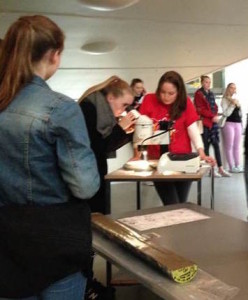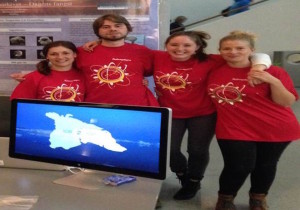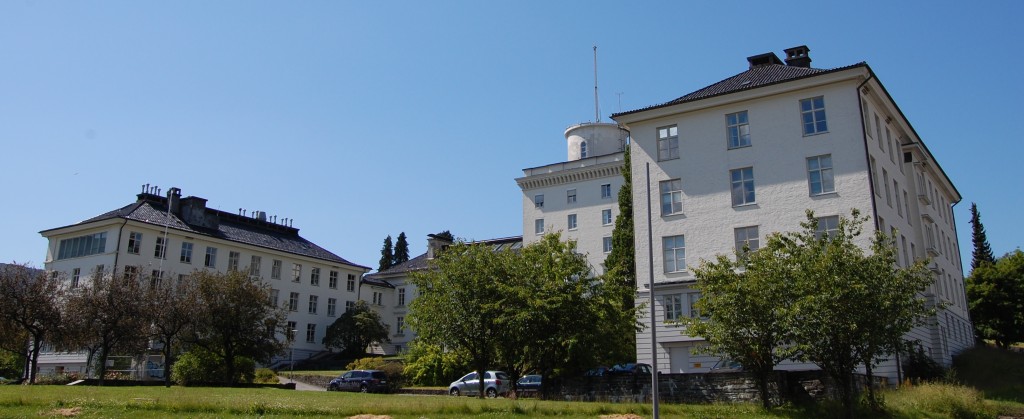
Uni Research and the Bjerknes Centre for Climate Research ensured a popular stand during UNG 2015, organised by Forskningsdagene. The theme of the week was food, so Ice2Ice decided to put the climate archive on the dinner table.
Ocean water, sediment cores and volcanic ash were some of the ingredients on Ice2Ice’s menu. Around thirty-five curious high-school students seized the opportunity to ask questions and have a look in the microscope. A poster explained different ways of measuring sea temperature, salinity and sea ice. The students got to learn about methods, which are used to obtain knowledge about climate back in time. Since it is not possible to make direct measurements of temperature from earlier times, one has to use the geological archive to get the information needed.
Knowledge about the past sea-ice extent is very important to us for several reasons. For exemple, it is necessary for us to find out how temperature, salinity and sea-ice have varied in the past to be able to tell how these are going to behave in the future. We can make comparisons between the proxy or old data and instrumental data from today to discover changes and we can use this to test climate models.
The students had the opportunity to have a closer look at the different depths in a marine sediment core recovered from off eastern Greenland. However, the Ice2Ice team did not stop there: students were also allowed to taste the different layers. By tasting the sediment core, they noticed whether the consistency was “toothpaste” or “crunchy” and were further able to tell what parts the sediment core was made of: the clay is like toothpaste and contain only very small grains while the silt is more coarse and crunchy. The microscope was useful to distinguish the different types of foraminifera: which in short is tiny plankton with hard shell less than 1 mm big. Particles of sand and minerals were identified and the students also got to learn about the Ice2Ice’s cruise from this summer.

Evangeline Sessford together with colleagues Henrik Sadatzki, Margit Simon and Ida Olsen from the Ice2Ice team organised and manned the research stand. Evangeline says that to most of the students this was new knowledge.
– The students enjoyed looking in the microscope, as most of them never had tried that before. I think they felt a bit of pride when they managed to identify the correct species from the poster as the one they were looking at in the microscope. They were also quite intrigued that the size of the sediment could tell so much about current, and that you could actually taste it to tell the difference.
The students were curious about why the researchers need information about past temperatures.
– Knowing how the oceans were in the past during periods of warmer climate can shred light on what may happen in the future with concerns about global warming.
